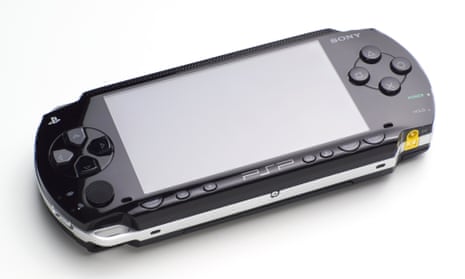It was Ridge Racer that did it. The first time a lot of people saw that early Sony PSP title, they couldn't quite believe the clarity of the visuals – it genuinely was like having a console game in the palm of your hand. While Nintendo always makes beautiful little games that fit into the fun-sized format of its miniature machines, Sony's design goal with the PSP was literally to make the PlayStation portable.
Now PSP is saying goodbye. Shipments to the US ended this year, and they are closing in Japan soon. European stores will see their last arrivals toward Christmas. Launched in Japan in December 2004, it is almost 10 years old – not a bad achievement for a handheld that was almost written off early in its lifespan.
Not that there was anything wrong with the design. Sharp, stylish, mature, the PSP looked like a very different proposition to the child-friendly Game Boy and Nintendo DS machines. And with its 32bit architecture and 4.3-inch widescreen display, it wanted to be seen as something serious, something you could play epic action adventures and shooters on. Something cool.
The universal disc that no one wanted
There were mistakes early on. The device's properietary disc format – the Universal Media Disc (UMD) – wanted to be a sort of sequel to the mini-disc, a one-small-size-fits-all solution for games, movies and music. But it was clunky and expensive and with digital distrubution on the rise, it was never going to become a multimedia standard. Later, an attempt to cash in on the digitla market with the disc-free PSP Go failed due to a high retail price and the rather glaring lack of must-have downloadable games.
Third-party support was also patchy. The console struggled with high piracy levels of its titles, which meant the likes of EA, Activision and Ubisoft were reticent about committing to major development projects. However, the ease with which hackers were able to break the device's security system also meant that it became a favourite with the homebrew development scene, and amateur coders are still producing games and demos for the platform.
Some look back on the machine as a failure beside the all-conquering Nintendo DS, but this is unfair. The console sold 80m units, a figure boosted by a series of excellent hardware and featureset updates, including the slimmer PSP-2000 and PSP-3000 models.
And it had some wonderful games. The stylistically gorgeous Patapon, Every Extend Extra and Lumines 2; the epic Metal Gear Solid Peace Walker and God of War: Chains of Olympus; the eye-scorching WipEout Pulse. Perhaps most important though was Monster Hunter, Capcom's phenominally successful creature collection game that had huge gangs of Japanese school kids meeting up in parks to trade and fight monsters via local area network play. The publisher even opened a temporary gathering place for Monster Hunter fans in London.
The first second screen
Mostly, PSP changed the way people thought about handheld machines, in a way that Sega's Game Gear and Atari's Lynx had tried and failed. It brought home console visuals and game design approaches to the small screen; it wasn't a family plaything, it was a serious piece of consumer electronics kit. It could play movies and music, store photos, surf the web, get on Wi-Hi and ad-hoc networks – it hinted at a featureset that would eventually become habitual with smartphones.
It was also very serious about Remote Play – the idea of connecting game experiences between the portable console and the home machine. True, very few games actually ended up suporting the concept, but it hinted at an era in which "second-screen" entertainment would become a buzzword. It set in place the platform that would later allow the much smoother integration between PS4 and PS Vita.
So long PSP. We'll always have Half-Minute Hero, Tactics Ogre, Valkyria Chronicles II and GTA: Vice City Stories. They cannot take LittleBigPlanet or LocoRoco 2. They cannot take that moment of loading up the otherwise unexceptional Ridge Racer and seeing the cars zoom, not into a cartoon DS landscape, but into a gloating sun that cast its rays out among the deftly textured hillsides – much to the momentary astonishment of gamers everywhere.

Comments (…)
Sign in or create your Guardian account to join the discussion